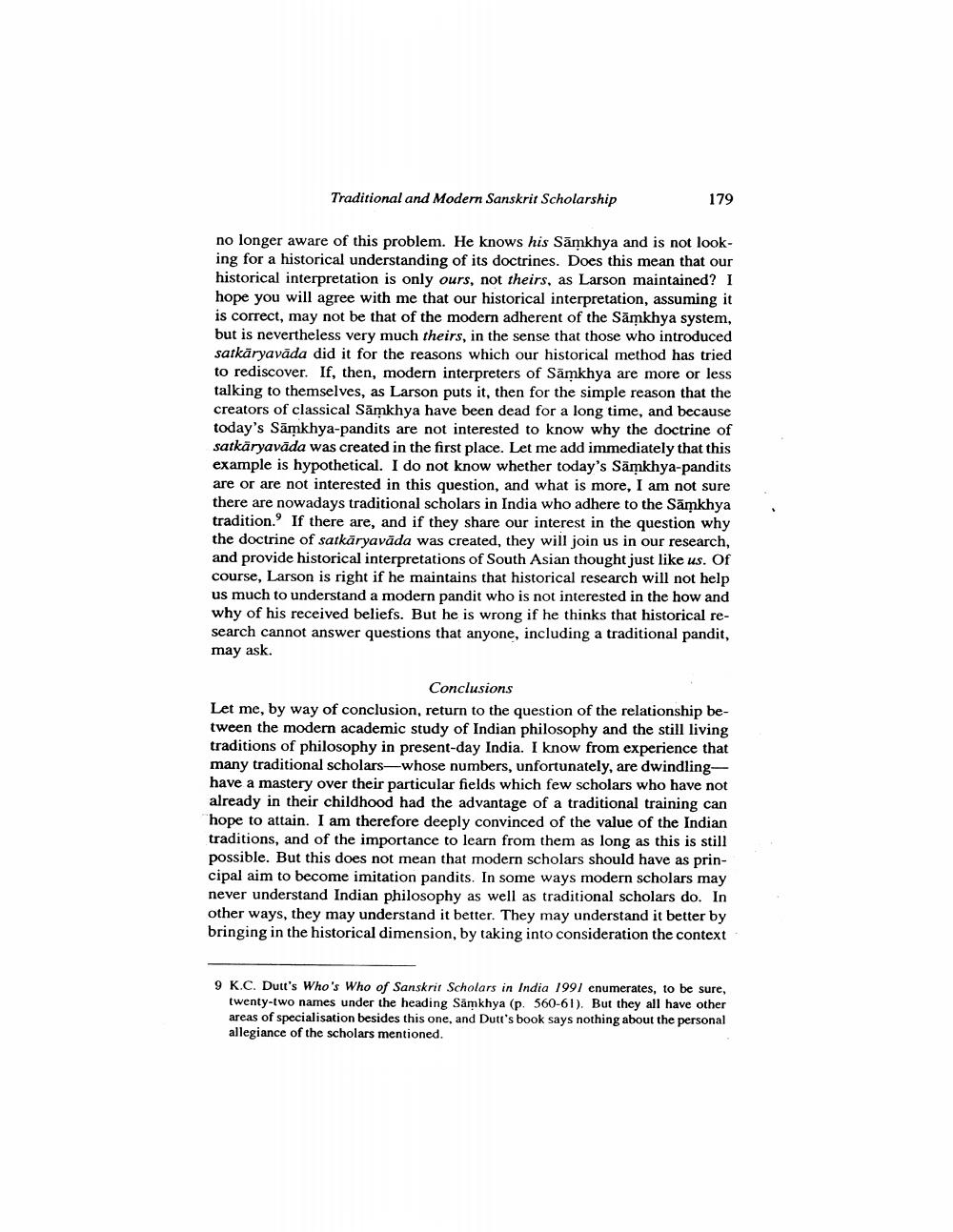________________
Traditional and Modern Sanskrit Scholarship
179
no longer aware of this problem. He knows his Samkhya and is not looking for a historical understanding of its doctrines. Does this mean that our historical interpretation is only ours, not theirs, as Larson maintained? I hope you will agree with me that our historical interpretation, assuming it is correct, may not be that of the modern adherent of the Samkhya system, but is nevertheless very much theirs, in the sense that those who introduced satkāryavāda did it for the reasons which our historical method has tried to rediscover. If, then, modern interpreters of Samkhya are more or less talking to themselves, as Larson puts it, then for the simple reason that the creators of classical Samkhya have been dead for a long time, and because today's Sāmkhya-pandits are not interested to know why the doctrine of satkaryavāda was created in the first place. Let me add immediately that this example is hypothetical. I do not know whether today's Sämkhya-pandits are or are not interested in this question, and what is more, I am not sure there are nowadays traditional scholars in India who adhere to the Samkhya tradition. If there are, and if they share our interest in the question why the doctrine of satkāryavāda was created, they will join us in our research, and provide historical interpretations of South Asian thought just like us. Of course, Larson is right if he maintains that historical research will not help us much to understand a modern pandit who is not interested in the how and why of his received beliefs. But he is wrong if he thinks that historical research cannot answer questions that anyone, including a traditional pandit, may ask.
Conclusions Let me, by way of conclusion, return to the question of the relationship between the modern academic study of Indian philosophy and the still living traditions of philosophy in present-day India. I know from experience that many traditional scholars—whose numbers, unfortunately, are dwindlinghave a mastery over their particular fields which few scholars who have not already in their childhood had the advantage of a traditional training can hope to attain. I am therefore deeply convinced of the value of the Indian traditions, and of the importance to learn from them as long as this is still possible. But this does not mean that modern scholars should have as principal aim to become imitation pandits. In some ways modern scholars may never understand Indian philosophy as well as traditional scholars do. In other ways, they may understand it better. They may understand it better by bringing in the historical dimension, by taking into consideration the context
9 K.C. Dutt's Who's Who of Sanskrit Scholars in India 1997 enumerates, to be sure,
twenty-two names under the heading Samkhya (p. 560-61). But they all have other areas of specialisation besides this one, and Dutt's book says nothing about the personal allegiance of the scholars mentioned.




